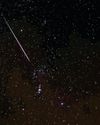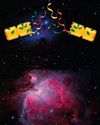試す 金 - 無料
JWST begins its SCIENCE JOURNEY
BBC Sky at Night Magazine
|September 2022
As we gaze astonished at the James Webb Space Telescope’s first science images, Colin Stuart takes a look at the questions it will answer over its decade-long voyage of astronomical discovery

Colin Stuart (@skyponderer) is an astronomy author and speaker. Get a free e-book at colinstuart.net/ ebook

A single galaxy 13.1 billion years old is picked out of a field of hundreds and its light signature recorded by Webb's NIRSpec instrument, a tool so sensitive it can mine information simultaneously from up to 150 individual galaxies that existed in the very early Universe

What do the first stars look like?
JWST will take us back to when the very first galaxies appeared
Astronomers are always looking back into the past. That's because it takes time for light to travel across the Universe. We don't see things as they are when the light arrives here, but as they were when the light first departed. For distant galaxies, the delay is millions and even billions of years.
So very distant galaxies were also some of the first galaxies to form in the Universe. The Hubble Space Telescope revolutionised this area of research, finding thousands of distant galaxies in a patch of sky so tiny that it could be covered by a grain of sand held at arm's length.
The light from the most distant galaxy observed before JWST - HD1 - took a staggering 13.1 billion years to reach Earth. Astronomers are peering back to a time just 700 million years after the Big Bang. Yet they want to look back even further to when the very first stars and galaxies appeared, estimated to be 100-200 million years after the Big Bang. They're hunting the first light that lit up the so-called cosmic dark ages.
このストーリーは、BBC Sky at Night Magazine の September 2022 版からのものです。
Magzter GOLD を購読すると、厳選された何千ものプレミアム記事や、10,000 以上の雑誌や新聞にアクセスできます。
すでに購読者ですか? サインイン
BBC Sky at Night Magazine からのその他のストーリー

BBC Sky at Night Magazine
How to photograph the Geminids
Dramatic meteor photos aren't just down to luck. We show you how to bag one
3 mins
December 2025

BBC Sky at Night Magazine
10 Christmas crackers for your new telescope
So Santa brought you a telescope - what now? Stuart Atkinson sprinkles some cosmic sparkle, with 10 sights to see over one fabulous festive night - from glorious galaxies and planets to glittering star clusters
7 mins
December 2025

BBC Sky at Night Magazine
10 years of reusable rockets
Ben Evans charts the rise of multi-flight spacecraft, the tech revolution that's transforming our access to space
6 mins
December 2025

BBC Sky at Night Magazine
SKILLS FOR STARGAZERS
Take great photos of the Milky Way
3 mins
December 2025

BBC Sky at Night Magazine
Smart scopes: from backyard to big science
Home-based stargazers are helping scientists crack some of the Universe's big mysteries - and you can join them. Charlotte Daniels shows us how
6 mins
December 2025

BBC Sky at Night Magazine
FIELD OF VIEW
Forget Instagram – embrace the moment
2 mins
December 2025

BBC Sky at Night Magazine
Q&A WITH A PLANETARY LIFE EXPERT
Saturn's icy moon Enceladus boasts water, heat and organics. Now scientists have discovered it has complex chemistry too. Could it prove to be habitable?
3 mins
December 2025

BBC Sky at Night Magazine
INSIDE THE SKY AT NIGHT
When The Sky at Night joined Curious Cases for a special episode, George Dransfield was there to answer your burning questions. Here she dives deeper into her favourite
3 mins
December 2025

BBC Sky at Night Magazine
Students fix JWST's blurry vision
PhD researchers restore the telescope's ultra-precise imaging - without a spacewalk
1 min
December 2025

BBC Sky at Night Magazine
On a Mission
This is an inspiring tribute to the trailblazing women who shaped NASA's human spaceflight programmes.
1 mins
December 2025
Translate
Change font size
